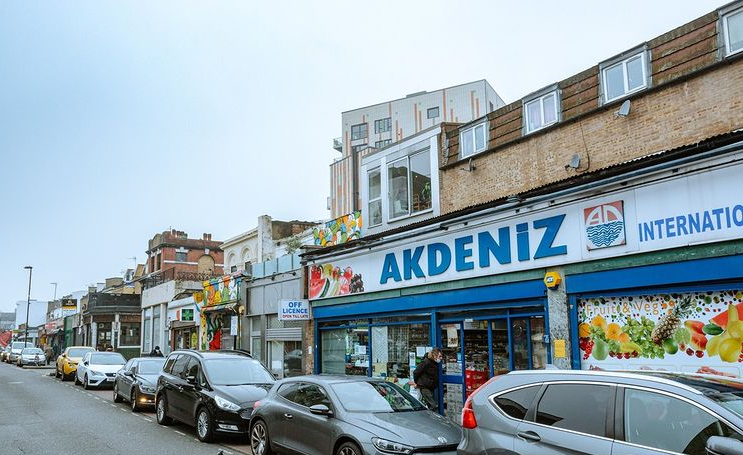As we enter 2021 there is no doubt that Britain is facing a housing crisis ─ a crisis of supply, demand, affordability and quality. Sadly, like an unwelcome ghost at the feast, all the Government seemed to be offering us last Christmas is reheated policy ideas, gone-off planning reform, regifted funding and a long hangover after a decade of austerity and welfare cuts.
In Hackney, where I am the Labour & Co-operative directly elected Mayor, house prices have risen by 71% in the last five years. Nationally, homelessness temporary accommodation (TA) placements have risen by 71% since 2010 and 80% of those in TA in Hackney are now estimated to be in work. And ‘permitted development rights’ have allowed landlords to turn former office blocks into homes without planning permission, leading to poor quality, rabbit-hutch homes ─ too often leading to private profit from the homelessness crisis.
It is a multifaceted crisis that the Tories think will be solved very simply ─ by reforming the planning system. Their latest White Paper, entitled Planning for the Future, sets out proposals to supposedly help increase the number of homes built every year, but will end up causing longer-term problems. Recently announced (and welcome) changes to the proposed new planning formula for house building will not undo the damage the rest of the proposals could bring about.
First, the proposals suggest scrapping local planning policies currently co-produced between councils and their communities. Local Plans and policies will be replaced by ‘national guidance’ that often just sets out the bare minimum level of standards that local people have rightly come to expect from developments ─ standards on affordability, sustainability and infrastructure.
Next, the Tories want to create a simpler zoning system, designating areas across England into three new categories: ‘growth’, ‘renewal’ and ‘protection’ areas. Importantly, ‘growth’ areas will give developers automatic planning permission to build, so long as they meet the national standards. Imagine the current permitted development rights on steroids.
These proposals are severely undemocratic ─ they will transfer power and responsibility away from local councils to Ministers and Whitehall Civil Servants, who will be able to set standards and zones in areas they have no knowledge of.
Automatic planning permission will mean local communities and councils will lose the one opportunity they have to assess and comment on developments in their areas. The scrapping of Local Plans will also mean local people will lose the chance to shape policy in their areas. This also risks that policies like Hackney’s new Child Friendly Places SPD or our commitments to green infrastructure and genuinely affordable workspace could be sidelined.
On infrastructure, the Government is suggesting ‘streamlining’ the current developer taxes into a single ‘Infrastructure Levy’. At the same time, the Government will introduce a mandatory 20% target for their new ‘affordable First Homes’, which is really just homes subsidised market-rate homes. This will hamper the already difficult negotiations the councils have to go through to push developers to provide genuinely affordable homes.
The Government also wants to implement the principles of biodiversity net-gain in the planning system, as well as a ‘biodiversity credits’ system to tax developers where they fail to meet net-gain targets. It’s a sound principle, but at the moment the credits will be paid straight to central government, and not the communities which will be impacted by the development.
At the same time, if councils lose the lever of our current planning system ─ being able to set local biodiversity policies and assess developments before they are built ─ it is unclear how the Government expects to achieve their principles. The risk is developers in ‘growth’ areas will use credits as a quick ‘get out of jail free’ card to simply pay a tax without contributing to nature recovery or biodiversity conservation which local people could benefit from. As I recently said in Parliament these conflicting policy objectives hardly feel joined up.
We know how important local green infrastructure is to local communities, particularly to those without a private outdoor space. If we didn’t, the coronavirus pandemic provided a valuable reminder. We also know the current planning system is better at achieving green space than no system at all ─ just 3.5% of new homes created through permitted development rights included access to private outdoor space, compared with 23.1% of homes delivered via planning permission.
And lastly there is the idea that these plans will increase supply; the Tory narrative is that really, it is a cumbersome planning process that is stopping homes being built. Well, in Hackney, 90% of residential planning applications submitted to the Council have been approved since 2010, but 25% of them have not been built. That is over 2,000 approved homes in Hackney that have not been built by developers, who are instead sitting on land in the Borough.
So at every turn, these plans will fail. They will not increase supply; they will reduce the amount of affordable housing; they will water down design and quality standards; and they will not tackle the biggest area of demand ─ social housing. Any planning authority, Labour or Conservative controlled, will tell you that when it comes to building homes, planning isn’t the problem.
Clearly, the private market alone will not meet the Tories ambition to see 300,000 homes built a year by the middle of this decade. This will be compounded by the economic shocks of coronavirus and Brexit. Ideology stops the Tories from seeing the clear practical contribution that large scale countercycle investment in green, social rented homes could bring across the UK and to communities like Hackney.
Building council homes is a pro-industry response. All the lessons from the previous recessions show that without council house-building, we will see a contraction of the construction industry, fewer small businesses, deskilled and unemployed workers and reduced competition ─ all resulting in fewer homes of all tenures being built.
Labour knows that when the market isn’t delivering for people, the Government must step in. Labour councils know that what we really need is a new generation of ‘Homes Fit for Heroes’.
The council-house building agenda in this country started after the First World War to house returning soldiers in affordable and high-quality homes, and we only marked that anniversary last year. Now we need homes fit for our heroes on the frontline of fighting the war against coronavirus.
The planning reforms might yet be another Dominic Cummings pet project that, now he has ungraciously left the building, may be dropped or watered down. But the Labour movement can’t take the chance of these proposals getting rushed through a Tory-majority Parliament.
If we believe in building genuinely affordable homes, with decent standards and built in sustainable communities that get a real say on development in their areas, the Labour movement must unite again to fight against these plans at every step of the way ─ and then fight for a return to mass council house building again.


One reply on “When it comes to building homes – planning isn’t the problem”
Whilst I agree that the proposed changes to planning will not solve the housing crises, neither will a return to the planning status quo. Since we became aware of man-made climate change in the 1970’s, planning policy has forced homeowners to construct loft extensions that resulted in excessive heated spaces in summer and freezing conditions in winter. The housing industry requires certainty of demand in order for young people to be attracted to work in it. My parents lived in ‘ homes fit for heroes’ built in north London in the interwar period. Unfortunately these were the methods of modern construction of the time, prefabricated steel with asbestos cladding, and my mother had to run a hot iron over her arms and legs every morning to aid her mobility.